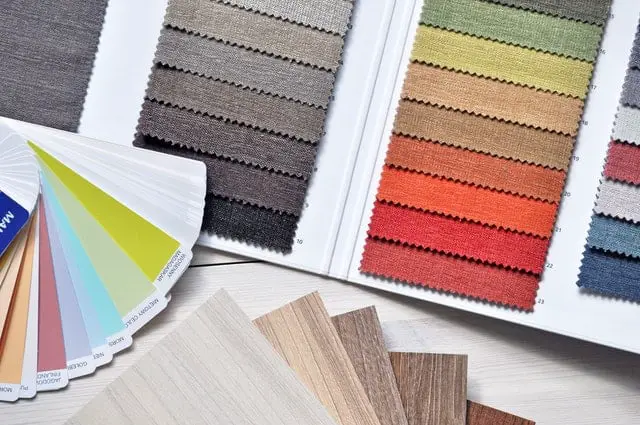The world of textiles is consuming. Finding the right textile for your next project ( whether it be garment or home apparel ) is overwhelming enough. This process is even more difficult if you do not know the proper language used to describe the textile properties. This article will discuss the different mechanics and terminology used to describe a textile.
What is the Proper Terminology Used to Describe The Contents of a Textile?
The manufacturing of textiles has a set vocabulary to describe the process. Though Synthetic and Natural textiles have drastically different properties, their vocabulary overlaps. Here are some examples.
Filament: A filament is a continuous and slender fiber that is usually bounded in a spool and used to wove fabric.
Staple: More commonly found in natural fibers, a staple is a short fiber. Its length is no longer that a few inches.
Cellulose: The fabric substance that is the base in all vegetable fibers. A polymer of the sugar glucose.
Liquid Polymer Solution: Liquid polymers are created into a solution that creates textiles.
Dope: ( the resulting liquid spinning solution) is forced through the spinnerette to create a filament yarn. The filaments are extruded at the same time.
Spinnerette: In the manufacturing of synthetic fibers, liquid polymer solution is forced through a small metal nozzle with an app. Five holes ( varying in size) to form a filament.
Extrusion: Extrusion is the name of the process of forcing the dope solution through the spinnerette.
Tribunal technique: the spinneret has 3 triangular slits. This produces fibers with a silk like hand that’s opaque, has soil handling capacity, good wicking ability, and crimp. Hollow fibers can be injected with air as fiber is forming. This creates warmth.
These are nine basic foundation textile terms that are important to know when discussing the components of a textile. You can use this vocabulary when speaking to a textile manufacturer. It is important to know this information when discussing what properties of a textile you want changed at any specific stage.
COMPONENTS OF A TEXTILE:
Understanding different aspects of a textile can be confusing.With a wide range of fibers, weaves, and other aspects of a textile, the formation of fabric is complicated. Here are some terms to help better understand the various visual parts and productions of a textile.
Warp: Warp are the lengthwise threads wrapping a textile vertically
Weft: Weft are the widthwise threads wrapping a textile horizontally.
Bias: The bias is found in all woven textiles. It is the grain that falls in between the warp and weft fibers in a textile. This is the stretchiest part of the fabric. When the bias grain falls at a 45 degree angle between the warp and weft edges, it is then called a ‘true bias’
Grain: Found in woven textiles, grain is the weaving pattern of the warp and weft fibers in a fabric.
Woven: Created on a loom, a woven textile is made of many fibers interlocked together. It is stronger and sturdier than knit fabrics.
Knit: A knit textile involves the process of inter-looping the fibers of yarn together. It is more flexible and elastic than woven fabrics.
Cover: Cover is the percentage of fabric that is covered by fibers ( number of warp and weft)
What is the Proper Terminology To Describe A Textiles’ Properties?
What makes each and every textile unique are its various properties. Some textiles are soft, while others have strength and abrasion resistance properties. Some terminology is common and comprehensible, however other vocabulary may sound unfamiliar to those who have little to no experience in textiles. You can read about this in my previous article, HOW TO CHOOSE THE BEST FABRIC FOR YOUR GARMENT. Here are some basic terms that will help you understand different characteristics of fabrics.
WATER-RELATED TERMINOLOGY
The following terms pertain to a fiber’s reaction to water. Some textiles such as silk can repel water, while others like cotton absorb moisture well. Here are some vocabulary words to describe these traits:
Hydrophilic: The ability to absorb water easily.
Hydrophobic: The capacity to repel water.
Hygroscopic: Can absorb moisture without feeling damp.
Wicking: The action of drawing moisture away from the body.
STRENGTH, ELASTICITY, AND ENDURANCE
How strong and resilient a textile is can be important for any textile used in an industrial setting as well as for certain apparel garments. Many people can confuse the definition of these terms between each other. Here is the correct definition for the following vocab words.
Strength: A fiber’s ability to withstand stress.
Elasticity: A fiber’s elongation and recovery properties.
Flexibility: The textile’s ability to twist and bend without breaking its fibers.
Pilling: Broken fibers on a fabric. Often occurs after washing and drying, and long wear of a textile.
Resiliency: A fabric’s ability to misshapen and revert back into its original shape.
VISUAL EFFECTS
Visual effects are arguably the most important aspect of a textile. It is the first aspect of a textile that you and your customers will notice. It is important to note specific terms to describe what visual effects you want in a textile for your product.
Hand: Hand refers to the feel of the fabric on the human body.
Luster: Luster is the quantity of light that is reflected off of the surface of the
textile. Luster makes the fabric look shiny and glossy.
Static: Statie is a collection of electric charge on the surface of fabric, often caused by either friction between other fabrics, drying, or wearing.
HEAT AND FLAMMABILITY:
It is important to be aware of the heat and flammability effects of a textile for any project. For example, If a company were preparing garments and supplies for firefighters, one must know if a textile is flammable. It is important to know the flammability of a fabric for any childrenswear articles. Here are some basic terms you should know.
Thermoplastic: A textile’s ability to be melted.
Flammability: A textiles capacity to ignite and burn.
Thermoplastic: A fabric’s endurance against heat exposure.
Why Is It Important to Know This Information?
Textiles play a major role in any fashion, economic, and religious settings. Many of you may be curious as to why it would be important to know these terms. It is easy to simply look up these terms on a search engine when need be. However, a basic vocabulary structure will help you navigate the world of textiles.
Recognizing these terms will help your fabric selection process go quicker and easier. Knowing each term, and what textile correlates with a set vocabulary will help choose your textile in a shorter time frame, without having to stop and look up a word. I have personally used this information throughout my studies at Michigan State University. When shopping for textiles for an upcoming assignment, or suggesting textiles to construct garments with at other internships, this information is useful. To know this information first hand is beneficial because I do not need to rely on any other sources or account for any information that may be inaccurate.
Also, when communicating with fellow designers, businesses, and manufacturers, your vocabulary will make you sound well informed in the textile industry. Learning this basic vocabulary will help you be better prepared for your first or upcoming textile project.
Conclusions
Textiles are the foundation of the fashion industry. In order to thrive in this business, having a general understanding of what needs to be constructed is key. Understanding how various textiles react to water, heat, or fire is important when making any outer-wear or active- wear garment. Information regarding strength, strench, and abrasion resistance helps us determine how the textile can withstand time and obstacles in different settings. Knowing the different components between a woven or knitted textile, or a natural and synthetic textile helps us differentiate their properties. Knowing these traits will help you begin your search for the perfect textile.







